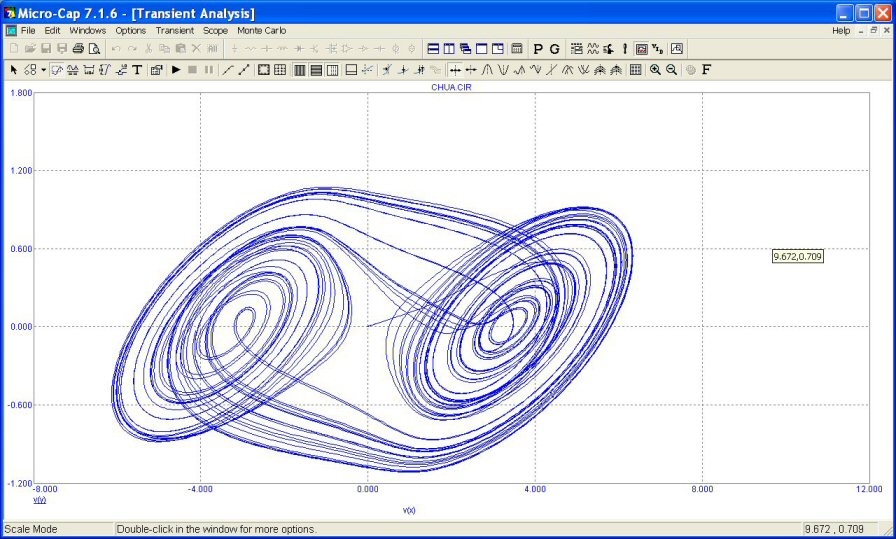|
|
|
The unstable stability - The Chua circuit
The Chua Circuit is the simplest electronic circuit exhibiting chaos, and many well-known bifurcation phenomena, as verified from numerous laboratory experiments, computer simulations, and rigorous mathematical analysis.
The Chua Circuit was invented in the fall of 1983 (Chua, 1992) in response to two unfulfilled quests among many researchers on chaos concerning two wanting aspects of the Lorenz Equations. The first quest was to devise a laboratory system which can be realistically modeled by the Lorenz Equations in order to demonstrate chaos is a robust physical phenomenon, and not merely an artifact of computer round-off errors. The second quest was to prove that the Lorenz attractor, which was obtained by computer simulation, is indeed chaotic in a rigorous mathematical sense. The existence of chaotic attractors from the Chua circuit had been confirmed numerically by Matsumoto (1984), observed experimentally by Zhong and Ayrom (1985), and proved rigorously in (Chua, et al, 1986). The basic approach of the proof is illustrated in a guided exercise on Chua’s circuit in the well-known textbook by Hirsch, Smale and Devaney (2003). An applet to simulate the circuit by using Java script is available HERE.
My simple circuit for Microcap simulator is reported below and by clicking HERE you can download the network files.
In the following picture you can see the simulation result of the Chua circuit. The attractors are identifiable as well as bifurcations.
You are here: Home-Training and courses-Chua circuit Previous Topic: Attenuators Next Topic: 3D Dipole analysis
|



